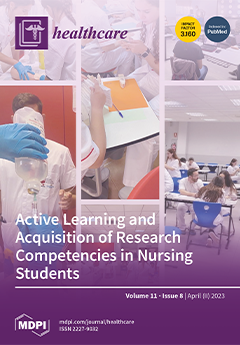Open AccessArticle
COVID-19: Factors Associated with the Psychological Distress, Fear and Resilient Coping Strategies among Community Members in Saudi Arabia
by
Talal Ali F. Alharbi, Alaa Ashraf Bagader Alqurashi, Ilias Mahmud, Rayan Jafnan Alharbi, Sheikh Mohammed Shariful Islam, Sami Almustanyir, Ahmed Essam Maklad, Ahmad AlSarraj, Lujain Nedhal Mughaiss, Jaffar A. Al-Tawfiq, Ahmed Ali Ahmed, Mazin Barry, Sherief Ghozy, Lulwah Ibrahim Alabdan, Sheikh M. Alif, Farhana Sultana, Masudus Salehin, Biswajit Banik, Wendy Cross and Muhammad Aziz Rahman
Cited by 1 | Viewed by 2461
Abstract
(1) Background: COVID-19 caused the worst international public health crisis, accompanied by major global economic downturns and mass-scale job losses, which impacted the psychosocial wellbeing of the worldwide population, including Saudi Arabia. Evidence of the high-risk groups impacted by the pandemic has been
[...] Read more.
(1) Background: COVID-19 caused the worst international public health crisis, accompanied by major global economic downturns and mass-scale job losses, which impacted the psychosocial wellbeing of the worldwide population, including Saudi Arabia. Evidence of the high-risk groups impacted by the pandemic has been non-existent in Saudi Arabia. Therefore, this study examined factors associated with psychosocial distress, fear of COVID-19 and coping strategies among the general population in Saudi Arabia. (2) Methods: A cross-sectional study was conducted in healthcare and community settings in the Saudi Arabia using an anonymous online questionnaire. The Kessler Psychological Distress Scale (K-10), Fear of COVID-19 Scale (FCV-19S) and Brief Resilient Coping Scale (BRCS) were used to assess psychological distress, fear and coping strategies, respectively. Multivariate logistic regressions were used, and an Adjusted Odds Ratio (AOR) with 95% Confidence Intervals (CIs) was reported. (3) Results: Among 803 participants, 70% (
n = 556) were females, and the median age was 27 years; 35% (
n = 278) were frontline or essential service workers; and 24% (
n = 195) reported comorbid conditions including mental health illness. Of the respondents, 175 (21.8%) and 207 (25.8%) reported high and very high psychological distress, respectively. Factors associated with moderate to high levels of psychological distress were: youth, females, non-Saudi nationals, those experiencing a change in employment or a negative financial impact, having comorbidities, and current smoking. A high level of fear was reported by 89 participants (11.1%), and this was associated with being ex-smokers (3.72, 1.14–12.14, 0.029) and changes in employment (3.42, 1.91–6.11, 0.000). A high resilience was reported by 115 participants (14.3%), and 333 participants (41.5%) had medium resilience. Financial impact and contact with known/suspected cases (1.63, 1.12–2.38, 0.011) were associated with low, medium, to high resilient coping. (4) Conclusions: People in Saudi Arabia were at a higher risk of psychosocial distress along with medium-high resilience during the COVID-19 pandemic, warranting urgent attention from healthcare providers and policymakers to provide specific mental health support strategies for their current wellbeing and to avoid a post-pandemic mental health crisis.
Full article






